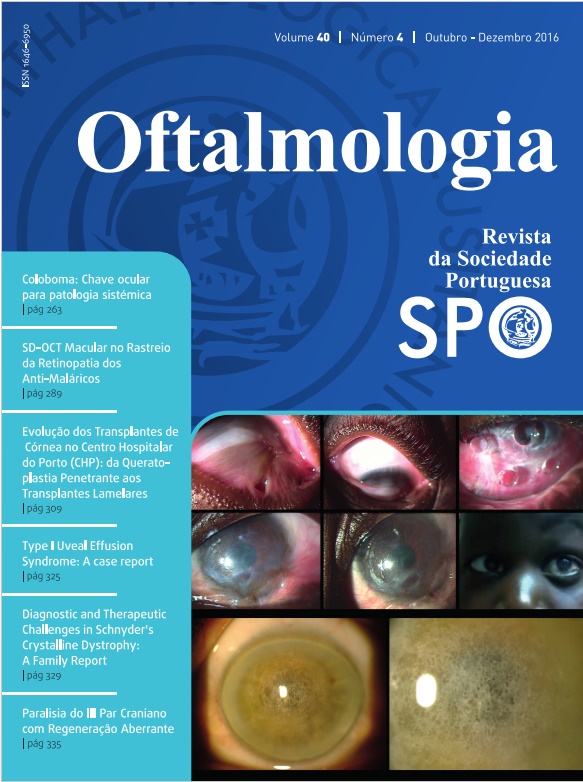Diagnostic and Therapeutic Challenges in Schnyder’s Crystalline Dystrophy: A Family Report
DOI:
https://doi.org/10.48560/rspo.8974Keywords:
Schnyder dystrophy, corneal dystrophyAbstract
Introduction: Schnyder’s crystalline corneal dystrophy (SCCD) is a rare autossomal dominant condition characterized by abnormally increased deposition of cholesterol and phospholipids in the cornea leading to glare and disproportionate loss of photopic vision.
Methods: The authors present two cases of SCCD, from the same portuguese family.
Results: The first case is a 60-year-old man with progressive, bilateral and painless loss of visual acuity over more than 30 years. He was clinically diagnosed with SCCD and confirmed histologically after penetrating keratoplasty. The second patient is a 41-year-old woman, daughter of the first patient, with a milder form of the disease, often more difficult to diagnose.
Conclusions: The two cases reported confirm the fact that the more elderly patients with SCCD present with increasing opacification and therefore poorer vision. The more severe form of the disease of the first patient associated with the presence of crystals makes the clinical diagnosis easier. However, the second patient could have been easily misdiagnosed. This confirms the importance of other family members examination.
Downloads
Downloads
Additional Files
Published
How to Cite
Issue
Section
License
Do not forget to download the Authorship responsibility statement/Authorization for Publication and Conflict of Interest.
The article can only be submitted with these two documents.
To obtain the Authorship responsibility statement/Authorization for Publication file, click here.
To obtain the Conflict of Interest file (ICMJE template), click here







